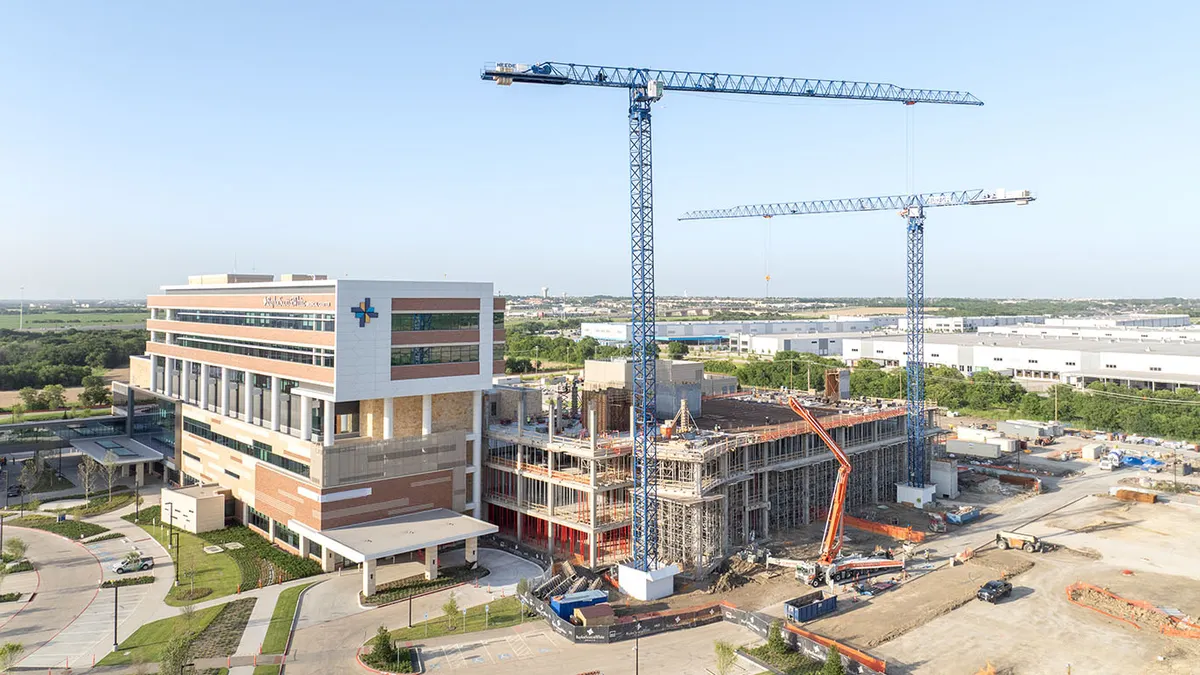With up to ten stakeholders influencing major capital projects, aligning priorities can feel like navigating a maze—and when every dollar counts, so does every decision. Health systems must balance strategic priorities, financial realities, clinical needs, and governance requirements. Data-driven insights transform this complexity into clarity, helping align priorities, optimize resources, and deliver predictable outcomes.
A recent DPR Construction report recommends healthcare systems planning capital projects rely on data to help all stakeholders get aligned and make decisions with conviction that help create more predictable outcomes for construction. It sounds obvious, but with market pressures ranging from tariff uncertainty, supply chain challenges and, of course, growing needs to support patient communities, data is often taken for granted.
Bringing data to the forefront helps all stakeholders align, enabling decisions that provide certainty across the planning, procurement, execution and activation stages of a project.
When it comes to construction, it’s easy to think that starts after planning. However, data-driven decision-making should be used as early in the capital planning process as possible. When data guides decisions that affect capital projects, it provides transparency across the organization. Stakeholders then buy in due to a better understanding of how the capital plan is developed. As stakeholders get behind a plan, resources—financial and beyond—can be more clearly allocated to capital projects.
Some of the key areas where data can support successful construction starting from project conception include:
- Connecting Project Goals to Strategic Needs. Essentially, this is using data to help crystallize the “why” behind a project. For example, data around patient volumes, including the balance of inpatient and outpatient volumes with the corresponding revenue based on reimbursements can quickly be translated to the bottom line and help teams prioritize what projects must have vs. things that might simply be nice to have.
- Measuring Progress Against Conditions of Satisfaction. Using key performance indicators to establish conditions of satisfaction that are tied to clear performance metrics is essential. This is how progress can be measured throughout the project. As potential changes emerge and the project's scope comes into question, the conditions of satisfaction built based on data can be used to guide potential changes. Anyone who has ever spent time and sweat with value-engineering and design changes can attest to the benefits of this data driven approach.
- Increasing Empathy by Understanding Operational and Market Conditions. Industry knowledge helps general contractors understand health systems’ operational environments and concerns. For example, when a general contractor’s project team understands how outpatient and inpatient services drive revenue, they can better understand a health system’s priorities. Similarly, if the project team is aware of the data behind national healthcare trends—the growing percentage of the aging population or continued burnout epidemic in physicians and nurses, for example—they can understand the challenges systems face and be more empathetic builders.
Taking full advantage of data in the planning stage means having design and contracting partners involved early on, as well. Early contractor involvement, especially from a self-performing general contractor, can yield additional benefits in planning.
The cost of capital is always an issue. Combined with additional pressures, the stakes on any capital construction project feel higher than ever. In a volatile market, data isn’t just helpful—it’s essential. By embedding it early and often, healthcare systems can build with confidence, clarity, and purpose.










